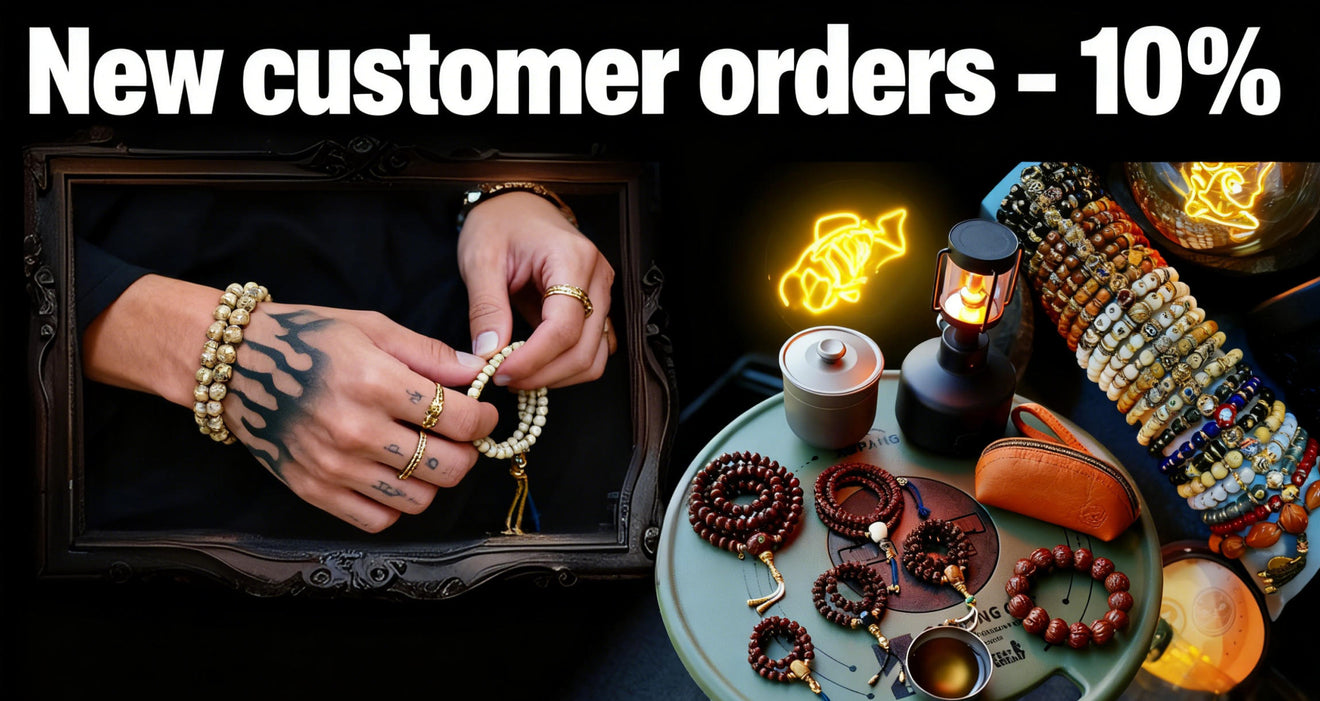
Inside the elaborate weave amidst Tibetan religious beliefs are present two celebrated items: the elaborated thangka and crafted bodhi seed. Each, in its own unique way, serves as a conduit to spiritual enlightenment. The thangka, an intricate scroll, illustrates divine figures, symbolic diagrams, or Buddhist narratives, serving as a contemplative tool.
Meanwhile, the bodhi bead, often crafted from fine gems, bark, fruit stones, or skeletal fragments, is a tangible reminder of Buddha's nirvana under the bodhi tree. Using the beads while meditating strengthens attentiveness.
- In unison, the thangka and the bodhi bead symbolize the path to liberation. They offer a tangible link to the age-old knowledge of Tibetan Buddhism.
Legends Echoed from Camel Remains
Spanning bygone centuries, primordial treasures whisper tales concerning a world long lost. These are not sparkling objects of shadowed empires, but plain camel bones engraved with inscriptions that contain the secrets of a bygone phase. Every fragment holds the echo in a life lived, a journey traveled, and a connection to the primeval wisdom within which envelops us all.
- Such objects
- Fragments
- Function as
Unlocking the Symbolism within Thangka Masterpieces
Tangkas are captivating paintings on canvas, meticulously crafted by Tibetan artists to depict exalted figures and scenes from Buddhist writings. Each detail within a thangka is laden with depth, forming a complex tapestry of visual narratives that guide the viewer on a meditative journey. The palettes used in thangkas are not merely aesthetic choices but carry intrinsic connotations, indicating different aspects of the Buddhist doctrine. From the austere figures to the intricate layouts, thangkas offer a glimpse into the rich world of Tibetan Buddhism, inviting us to reflect upon its teachings.
- Ancient thangka art often depicts key Buddhist figures such as Buddha Shakyamuni, Bodhisattvas like Avalokiteshvara and Manjushri, and enlightened beings from various traditions of Tibetan Buddhism.
- Beyond these representations lies a wealth of learnedness that can be discovered by those who analyze the symbolic language of thangkas.
Path to the Buddha's Path to Enlightenment: Embodied in Beads and Bone
Upon the winding way to liberation, the Buddha used emblems imbued with profound value. Each bead and fragment held within them the substance of his philosophy, revealing glimpses into the form of reality. Alongside their form, the Buddha expressed profound realizations that exceed the realm of material perception.
From said spiritual beads, crafted from exotic materials, emerged vibrations that echoed with the vibrant energies within. The bone of a creature, meticulously transformed into insignia, served as tangible indicators of the impermanence native to all manifestations.
Thangkas: Windows into Himalayan Spirituality
Thangkas glowing paintings on cloth serve as impactful representations of Himalayan spirituality. These intricate works of art, meticulously created with detailed brushstrokes, depict a vast array upon Buddhist deities, mandalas, and scenes from historic scriptures. Each thangka is an instructive medium for meditation and contemplation, offering perception into the complex teachings of Buddhism.
- They are often used in ritual ceremonies as part of
- manifesting states of spiritual insight.
- Thangkas function as not merely decorative creations but rather gateways into the rich and mesmerizing world of Himalayan spiritual traditions.
Discover the Depth of Bodhi Beads: A Path to Mindfulness and Compassion
Each pellet on a bodhi bead mala whispers tales of ancient wisdom, guiding us on a path through the tranquil waters of mindfulness. As we hold these intricately shaped beads, our fingers trace the contours of unique one, anchoring our focus in the present moment. The gentle heft of the beads against our palms serves as a tangible reminder to take a breath, fostering a sense of calm.
- Every time bead that passes between our fingers, we grow compassion, extending it first to ourselves and then outward to the world.
- Buddhism teaches us that mindfulness is a art form that requires patience and endurance.
Employing the rhythmic repetition of mantra or simply the mindful counting of the beads, we detach from the relentless chatter of the mind.
The practice employing bodhi beads is a refined invitation to restore our connection with ourselves and the world around us.
Soulful Creation: Camel Bone Bracelets Enhancing Spiritual Progress
Determination acts as a profound catalyst in our lives, shaping our experiences and guiding us towards our fated course. When we combine this intention with the venerable truths of crafting a camel bone bracelet, we create a potent synergy that can propel our spiritual growth.The camel bone itself is symbolically rich, representing toughness. Its natural beauty and ancient magnetism serve as a constant reminder of the fundamental dynamic within each of us.By deliberately picking each shard, channel our desires into the bracelet. With every knot or interlock, we interlace our hopes, dreams, and aspirations for spiritual evolution. This act of creation becomes a contemplative exercise, bonding us with our inner wisdom and guiding us on a expedition of realization.- Consider the colors and patterns within the camel bone to reflect your intentions.
- Visualize your desires as you work, knotting them into the bracelet's structure.
- Bless the bracelet in ceremonies to infuse vitality.
The Fascinating Story of Camel Bone in Buddhism
In the rich tapestry inside Buddhist tradition, artifacts often hold profound symbolic meaning. Amidst these varied objects, camel bone stands out as a noteworthy and fascinating element. Across history, this material has been adopted in the crafting through various Buddhist instruments, each imbued with specific implications.
- Considered as a symbol of resilience and strength due to the camel's ability to thrive in harsh environments, camel bone often symbolizes spiritual fortitude.
- Besides, the color and texture regarding camel bone are believed via some to hold auspicious connotations, indicating purity and serenity.
Hence, camel bone has become a treasured part of Buddhist legacy, serving as a tangible bond to the profound teachings through this ancient faith.
Thangka Works: Stories of the Divine
Within the ethereal realm of Tibetan Buddhism, Thangka paintings emerge as sacred portals to enlightenment. These stunning works, meticulously crafted by skilled artists known as thangkapa, depict a myriad composed of vibrant deities, celestial beings, and mythical creatures. Each brushstroke instills profound spiritual significance, narrating ancient tales and philosophical teachings.
- Encompassing a vast repertoire of Buddhist iconography, Thangkas serve as both devotional objects and instructional tools. Pious practitioners gaze upon these paintings during rituals and meditations, seeking to pursue spiritual wisdom.
- Intricately adorned with intricate details featuring a vast array of vibrant hues, Thangkas are considered windows into the divine. Every painting acts as a symbolic representation of the Buddha's teachings and the path to liberation.
Employing their compelling imagery and symbolism, Thangka paintings offer a glimpse into the rich devotional traditions of Tibet. They are a testament to the enduring charm of Tibetan art and its profound ability to inspire.
Embracing the Duality: Thangkas and the Cycle of Life and Death
Thangkas, vividly decorated scrolls from Tibet, express a significant discourse on life’s evanescence. Each intricate portrait depicts deities and beings engaged in the unceasing process of life and death, a array of birth, growth, impermanence, and revival. The artists skillfully blend these concepts within the thangka's domain, highlighting the linkage of all things. Through vivid symbols, they invite us to ponder on our own life. The cycle returns, a dance of coming and going, highlighting the Energy Bracelet preciousness of each moment. By embracing this duality, thangkas teach us to welcome the beauty in both life's joys and sorrows.Loops of Belief: The Significance of Bracelets in Buddhist Practice
In the intricate tapestry of Buddhist practice, seemingly simple objects often hold profound meaning. Among these are bracelets, which serve as tangible tokens of devotion and commitment to the teaching of Buddha. Worn on the wrist, a bracelet operates as a constant reminder of one's aspirations and ambitions. It can suggest the impermanence of life, stimulating practitioners to remain stable in the present moment. Some bracelets may harbor sacred glyphs, such as mantras or the names of Buddhas, which are viewed to generate positive energy and guard. Others frequently are made from ingredients with spiritual significance, like sandalwood or lotus seeds, boosting the bracelet's energy. Ultimately, the significance of a Buddhist bracelet extends far beyond its physical form. It becomes a powerful tool for reflection, a catalyst to live in harmony with the teachings of Buddha, and a source of one's unwavering allegiance.